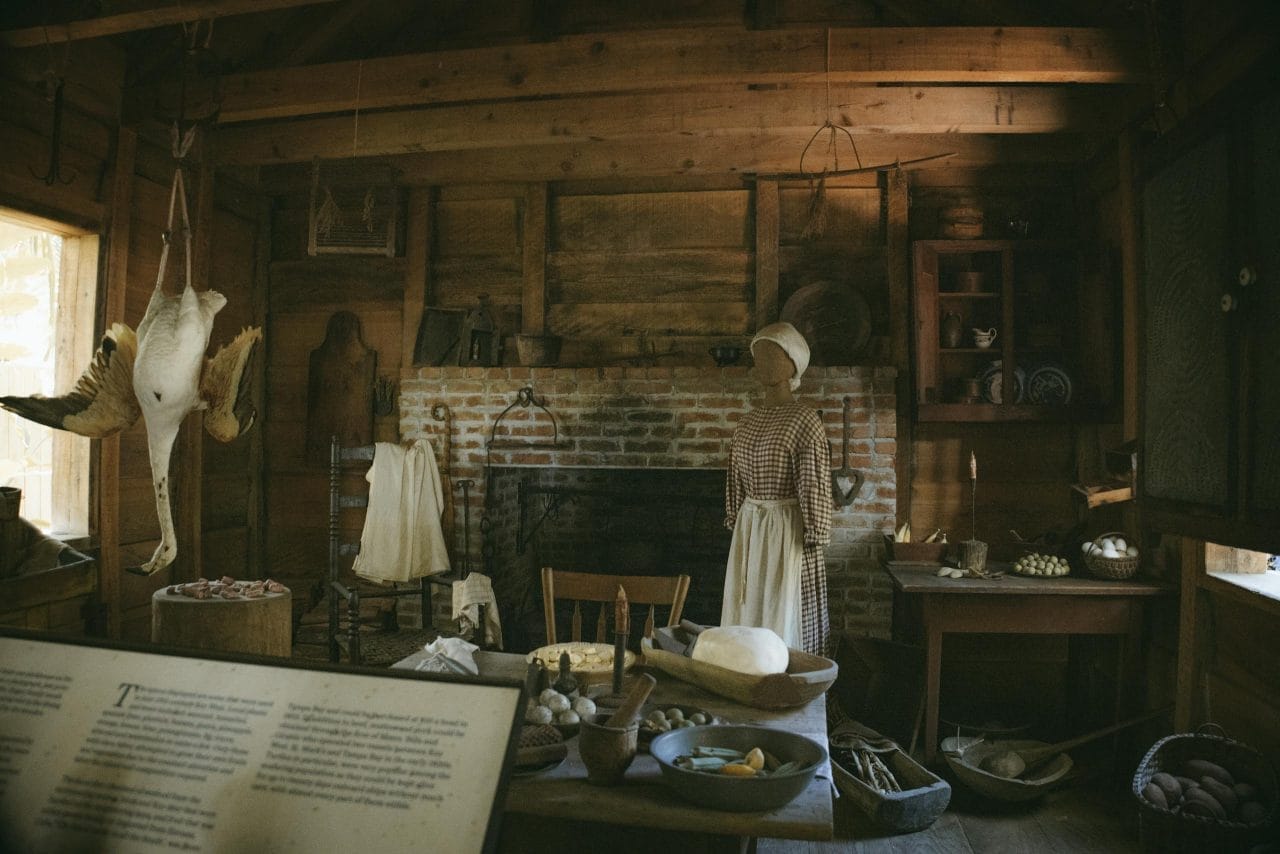I Made These FREE Vintage Recipe Tools JUST For You
This recipe was created with help from AI tools and carefully reviewed by a human. For more on how we use AI on this site, check out our Editorial Policy. Classic Fork earns a small commission from Amazon and other affiliate links at no extra cost to you, helping us keep our content free and honest.
What Colonial Kitchens Looked Like (And How They Worked)
Colonial kitchens weren’t cozy farmhouse spaces filled with gadgets. They were hot, smoky, hardworking rooms built for survival, not style.
At the center? Fire. Every meal started with it. Every recipe depended on it.
What Would You Cook in Wartime?
Step back in time and discover what you could make with limited wartime rations
The Hearth Was Everything
The fireplace dominated the kitchen.
It wasn’t just for warmth. It was the stove, oven, grill, and sometimes dryer—all in one. Cooks used iron pots over embers, turned meat on spits, and baked bread in Dutch ovens placed right next to the flames.
Some fireplaces even had crane arms to swing pots in and out of the heat. Every meal meant managing firewood, embers, and timing. It took skill just to boil water.
Bare Walls and Wooden Beams
The kitchen was no-frills.
Walls were brick or wood, often unfinished. Exposed beams above the fireplace were perfect for hanging herbs or onions to dry.
Windows were small and practical—just enough to let in light, but not too much heat in winter. They had diamond panes and heavy wooden sashes.
Floors were wide-plank hardwood, tough enough to take spills, hot ashes, and heavy foot traffic.
Furniture and Storage
Most kitchens had one big wooden table for prep work.
Cabinets were rare. Instead, utensils and supplies hung from hooks or sat in small spice drawers and shelves.
Pewter plates and wooden bowls were common. Fancy china? That stayed locked away for guests or never existed at all.
Tools of the Trade
If it could survive fire, it had a spot in a colonial kitchen.
Think:
- Iron pots and kettles (some over 40 lbs)
- Skillets and bake kettles
- Dutch ovens with lids for piling hot coals
- Roasting jacks and spits for meat
- Chafing dishes, ladles, and wooden spoons
- Potato boilers and copper skimmers
These weren’t optional—they were essential. Cooking was a daily battle, and the right tools kept meals coming.
One-Pot Meals and Open-Fire Feasts
Colonial cooking wasn’t fancy, but it was filling.
One-pot stews, boiled puddings, root vegetables cooked in embers—that’s what dinner looked like. Roasts turned slowly on spits, and bread baked in heavy cast iron.
Recipes were often memorized, passed down orally. Most people didn’t own cookbooks, and when they did, they used them for special dishes.
The Kitchen Was the Work Zone
The kitchen was where things happened.
Women ran the space like clockwork. Children helped. Fires were fed, meals stirred, herbs dried, and doughs kneaded.
It wasn’t a hangout spot. It was hot, smoky, and nonstop. But it was also the heartbeat of the home—where food brought people together, even in the hardest times.
Quick Recap Table
| Feature | Description |
|---|---|
| Fireplace | Main cooking source—used for boiling, baking, roasting |
| Walls & Beams | Bare wood or brick with hanging herbs or tools |
| Windows | Small, practical, with diamond-shaped panes |
| Flooring | Hardwood planks, built to last |
| Furniture | One prep table, few shelves or drawers |
| Tools | Iron pots, Dutch ovens, roasting spits, chafing dishes |
| Cooking Methods | Open fire, boiling, baking in coals, roasting |
| Storage | Wall hooks, spice drawers, no fancy cabinets |
| Atmosphere | Busy, smoky, warm—center of household activity |
Colonial kitchens were tough, smart, and built to work. No modern shortcuts—just fire, muscle, and a whole lot of know-how.
And yet, everything came out of that room: bread, soup, stews, pies—and the warmth of the entire home.

